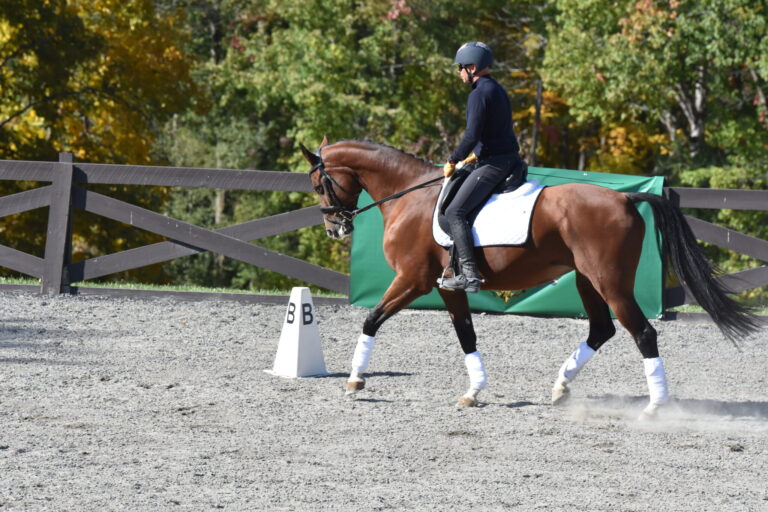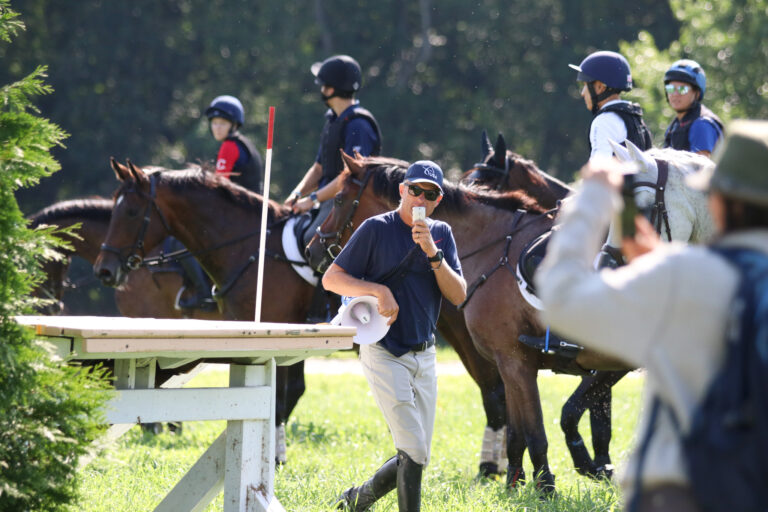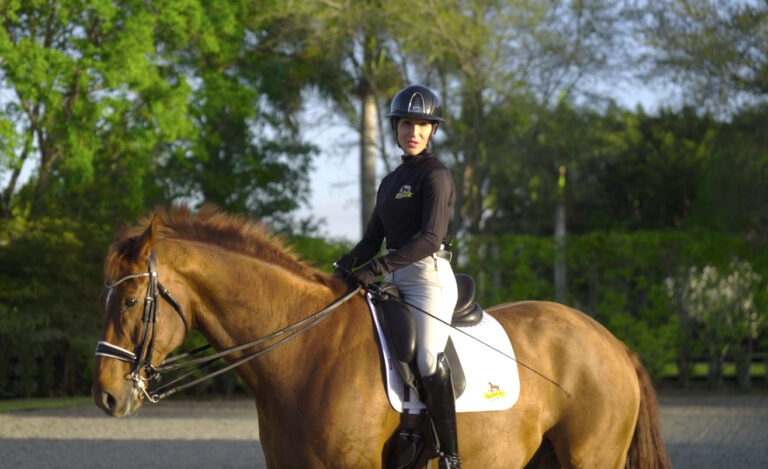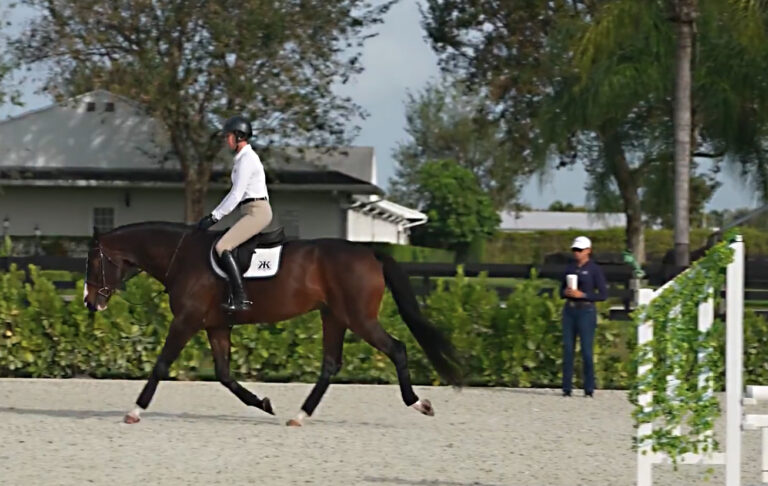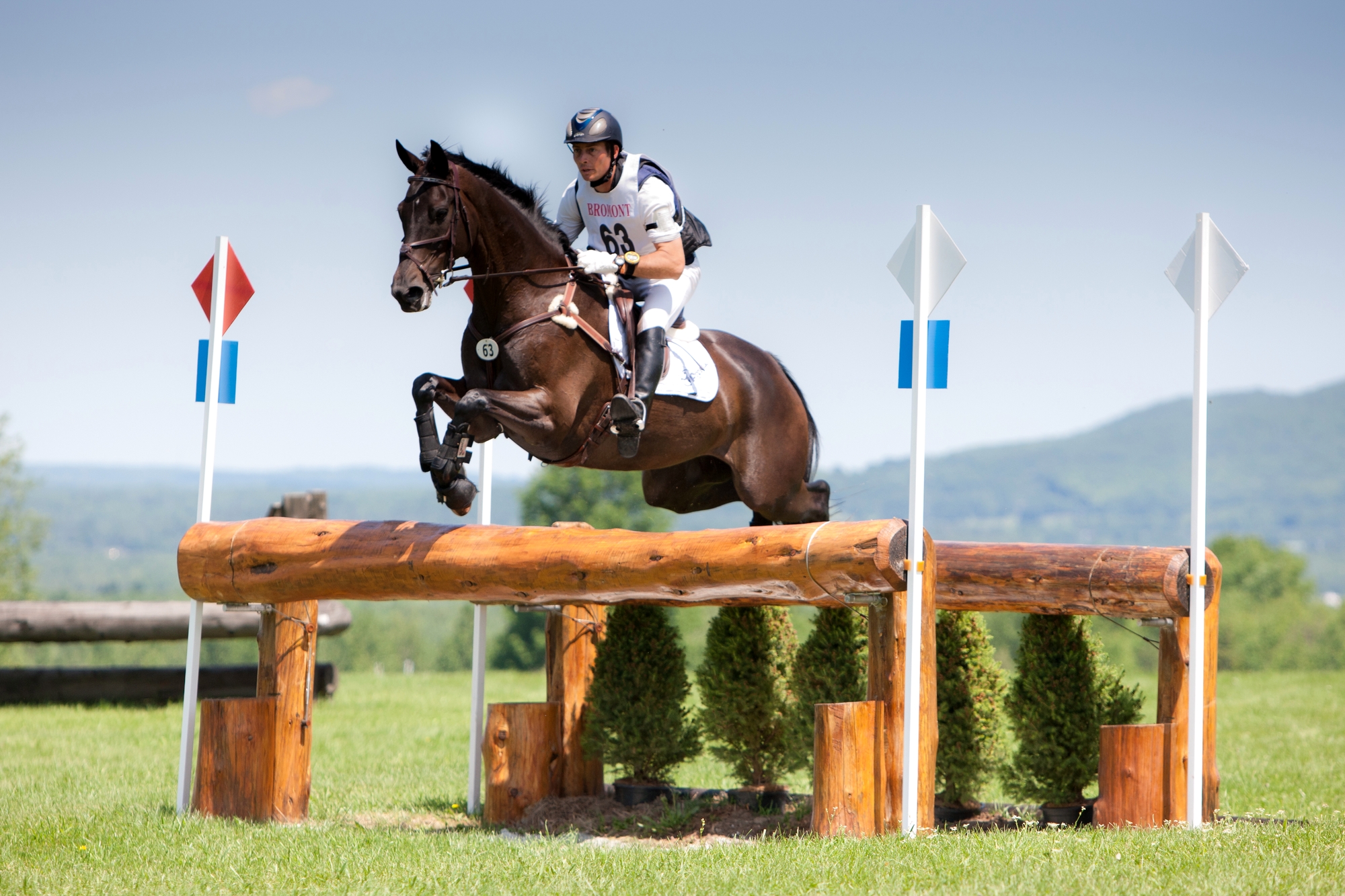
Practical Horseman: Why did you choose this sport?
Jonathan Holling: The truth of the matter is, I was always a competitive person. But I matured late. In elementary school, I was good at all the sports. But by high school I was one of the smaller, slower kids. After a while it is no fun playing baseball or football if you are not competitive. But the horses? I was always good at that.
PH: Did you always know you would be a riding professional?
JH: Not really. At 18, I spent one day at the University of Wisconsin. I hated it. When I walked in, the professor had a list of students and for some reason my name was not on it. I was supposed to be somewhere else. So I said to myself, “This is a sign from God that I am not supposed to be doing this.”
When I told my parents, my dad was angry, my mom was crying. But the greatest thing my parents ever did for me was to be adamant that I was not going to stay and run our family stable. They wanted me to go away and learn something. So I went to Toronto and worked for Peter Gray and Paul Delbrook. Everything I do for my horses now, I learned from them.
PH: How did you find success?
JH: I had a lot of people helping me, people saying, “Keep trying!” My family was there. Then I was lucky enough—I think because I am a genuine, honest, straightforward, hardworking person—to attract clients who appreciated that.
PH: What have you learned along the way?
JH: Whether you are young or established, people who are going to own horses and be clients want to feel like they are part of the team.
You can’t think of them as a sponsor—they are a customer and a friend. They want enjoyment, they want communication and they want a personal relationship. They need to feel that you want their help, you want them to be part of the journey. That is the biggest thing I’ve learned in the last 15 years. You don’t necessarily have to be a four-star rider to have a great group of owners. You just have to understand their motivations.
PH: What is your approach to teaching?
JH: My students know that I care. When they do well they see me jumping up and down—they know I am excited because I understand how much work they have put into it. I am just as pleased as they are. Holling Eventing is not just my horses and my riding. It is also my clients and their horses and their success. We are all part of the team.
PH: Is there a particular saying you tend to use frequently with your students?
JH: I often joke and say, “Riding is very simple. It’s just incredibly difficult.” We can all complicate this. But you need to keep the training simple. You put your leg on to go forward. Close your hand and put on leg to collect. Walk, trot and canter with the horse reasonably supple. That’s all you really need. Once you establish those basics then the rest of it more easily falls into place.
PH: What do you like most about yourself?
JH: I am genuinely honest with people and I always try to do right by them. People know that and see it. Even if you make mistakes, they can tell what your intentions are and that matters.
PH: After your win at Bromont CCI*** in 2012, your friends dared you to streak across the competition field. There’s a video of you running naked in the dark that went viral on social media.
JH: This is such a difficult sport. There are so many near wins, so many disappointments. When it goes well, I am a big believer that you should enjoy the moment, savor it. Bromont was my biggest win to that point. Streaking was one of those things I did that was fun and ridiculous. Fortunately, the video was edited well and the angles were just right!
PH: Do you have a training philosophy?
JH: In eventing, we ask our horses to do different jobs. We get them nice and round in dressage, then we gallop them and get them flat on the cross-country course. Then the next day, we ask them to collect again for the show-jumping phase. If you don’t have the basics in place, then you have to be a magician to get this done. And I don’t want to be a magician.
So we spend time from the very beginning making sure these horses understand the basics. Whether it is a Novice horse or an Advanced horse, I am teaching the same stuff. Very often I have people who are riding up a level, and they are struggling. And every single time I go back to the basics. Is the horse in front of your leg or are you nagging him to go forward? When you ask your horse to collect, are you see-sawing on his face or does he react softly to that request? Do walk, trot, canter until you have mastered the basics.
PH: In 2008, your horse Direct Merger died on cross country during the Red Hills CIC*** from a suspected heart issue. How did his death affect you?
JH: I consider myself to be a pretty good horseman. I had won Red Hills the year before and knew what I was doing. But I had two horses in the three-star and the turnover time between horses was short. In order to have Direct Merger warmed up to make my second start time, I had him longed. Then he was put back in a stall. I got on him, warmed up over a few jumps and he went out of the start box like a cannon. He was hot and wild.
All I know is that as a horseman I changed my routine on that horse. When we got to the fence where he had his accident, he jumped that fence, staggered, stood up on his hind legs and he died.
The experts say it wasn’t my fault. But in my heart, I was the guy on him, I was supposed to be taking care of him, I was his partner. And I feel like that day I let him down. I regret that and I use it every day to drive myself to be a better horseman.
PH: Why did you get involved in supporting equine cardiovascular research?
JH: That day at Red Hills was without a doubt the worst moment of my life. I lost my horse. A good friend got traumatically hurt, another horse died on course. I remember saying afterward to Jenn (my wife), “I am not going to keep doing this unless I can be part of the solution.”
So I got involved in the governance of the sport and helped spearhead a long-term study. Eventing is such a small world that getting the data is incredibly difficult. It is like with organ-transplant recipients. You don’t want a horse to die to get the info, but every time a horse collapses on course we do a necropsy on them. That is mandatory now so we learn something every time.
We have learned a lot since 2008 and there is still a lot more to find out. But as long as we are moving forward, that is what lets me sleep at night. I feel like I am doing something to help.
PH: You’re 40 years old now. What advice would you give your 25-year-old self?
JH: At 25, I wanted to be a four-star rider. My goal was to get owners to buy horses for me and support me to go to Rolex, Burghley, etc. I wanted to represent the U.S. internationally—a super dream. But I kind of neglected that to get there you need to build a business of teaching and training—a business that actually makes money.
There are no fairy godmothers in this sport. I spent too long early in my life waiting for that person to come along. Start by building a base to draw on. Become an educated horseman and build your business first. Once you are able to take care of yourself and your horses, the rest of it will come.
PH: What do you regret?
JH: In the horse world, it is easy to ask for advice, but you don’t always get the best business advice. If I had listened more to my father, who had run a good business, I would have been better off.
PH: How do you make sure your horses are in the best condition to do eventing?
JH: You learn as you go to pick out the right horses and make sure the conformation is the best it can be. But anytime I have a horse with an injury, I ask if I did everything right to make sure this horse had the best opportunity to get there. Look at your program, your feeding, your farrier, your fitness. And part of the responsibility of the trainer is to move a horse on to the next career before it has a catastrophic problem.
PH: How do you feel about competing?
JH: I love to win and I hate to lose. But you need to show that you have joy and you love your horses and you appreciate them for what they have done. When I win, I think of all the time and effort that this horse has put in and how it’s great to get a payoff for that. And losing? I can finish a competition in last place and if my horse did his job to the best of his ability for where he is in his training, I can be happy with that.
PH: What is next for you?
JH: I know how lucky I am right now. I have worked my entire life to get to this place: an eight-stall barn filled with eight quality competition-level horses with a great group of owners. That has come from a lot of hard work, focus and dedication and from a lot of luck meeting the right people.
I appreciate all my supporters because they have put me in the right place—this is the best group of horses I’ve ever had. I have a good bit of time left in this sport, but at 40 you need to be doing it on the right animals.
PH: What will be your contribution to this sport?
JH: So much of how I think came from my dad. When I was a kid, he would say to me, “If you are going to borrow something, you return it in the same condition you got it or better.”
The people who came before us brought this crazy sport to America and laid the foundation for the business that we have today. At the end of the day, I am just borrowing eventing. When I am done, I’d like to think I’ll be returning the sport in a better condition than I got it.
About Jonathan Holling
Were it not for his parents’ sense of joie de vivre, Jonathan Holling might never have become an eventing professional.
Growing up in the suburbs north of Milwaukee, Jonathan rode casually in 4-H, competing in Western, English, jumping and gymkhana speed classes on the same Arabian-Quarter Horse cross. When his mother decided to open a small business, “she debated between getting a boutique and a stable. My dad decided a stable would be a lot more fun,” Jonathan said. “That is where I got my first taste of what it might be like to be a professional.”
At 14, Jonathan switched to eventing and began training with Anne Jennings. After high school, he moved to Toronto to train with Peter Gray, at the time the coach for the Canadian Olympic team. At 23, he returned to Milwaukee to open his own business. Jonathan has trained with David O’Connor and Leslie Law and is a well-known CCI**** level rider and trainer. He has competed at top international events, including the Land Rover Burghley Horse Trials, the Rolex Kentucky Three-Day Event and the World Cup Eventing Finals in Malmö, Sweden. In 2012, he won the Volvo Bromont CCI*** and was a member of the 2012 Nations Cup Team at Boekelo in the Netherlands.
Jonathan currently sits on the U.S. Equestrian Federation Eventing Sport Committee and chairs the Cross-Country Safety Task Force for the U.S. Eventing Association. He runs Holling Eventing at Willow Run Farm in Ocala, Florida, with his wife, Jennifer.
This article was originally published in the December 2017 issue of Practical Horseman.





